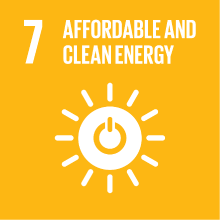INTRODUCTION TO ECONOMICS-2
- Academic year
- 2025/2026 Syllabus of previous years
- Official course title
- INTRODUCTION TO ECONOMICS-2
- Course code
- ET7005 (AF:558822 AR:324034)
- Teaching language
- English
- Modality
- On campus classes
- ECTS credits
- 6 out of 12 of INTRODUCTION TO ECONOMICS
- Degree level
- Bachelor's Degree Programme
- Academic Discipline
- SECS-P/01
- Period
- 4th Term
- Course year
- 1
- Where
- RONCADE
- Moodle
- Go to Moodle page
Contribution of the course to the overall degree programme goals
Macroeconomics is the study of the economy as a whole, and how the outcomes in one part of the economy affect, and are affected by, what happens in other sectors. So that macroeconomic models are manageable, we typically simplify them by focusing on totals and averages—for example, total employment, or average prices—and ignoring some of the variability among people, firms, and goods. Despite this, macroeconomic models are built on the same principles of tradeoffs that individuals face when allocating scarce resources. We will look at many contexts, among them the study of how the labour market and the goods market interact, and how fiscal and monetary policy can intervene in them.
Expected learning outcomes
- Understand how households, businesses, and governments interact in order to determine the price and quantity of goods traded
- Understand the consequences of public interventions in the markets
- Analyse the impact of fiscal and monetary policy on aggregate economic measures such as output, the unemployment rate, and inflation
2. Ability to apply knowledge and understanding
- Knowing how to interpret economic data using diagrams
3. Judgment skills
- Ability to apply the graphical and mathematical tools typical of macroeconomics to analyze how public policies can be designed to effectively address the challenges the world is facing
4. Communication skills
- Knowing how to talk about economic problems using the appropriate terminology
- Knowing how to communicate the results of an economic analysis in a precise and effective way
5. Learning skills
- Knowing how to exploit the multiple sources of information regarding the topics of the course presented on the sites suggested by the teachers and on the web in general
- Knowing how to use economic reasoning to critically analyze the world around us
Pre-requirements
Contents
2. The Demand Side of the Economy: Aggregate Demand and the Multiplier Model
3. Macroeconomic Policy, Inflation, and Unemployment
4. Economic Dynamics
Referral texts
The book is available for free online and as an ebook at https://www.core-econ.org/
Other material, from the same authors (the core team), is also available for free online:
Doing Economics
Experiencing Economics
Assessment methods
Type of exam
Grading scale
30L: The student masters the topics presented in the course and the assigned readings completely and demonstrates surpassing capabilities in analysing textual information; He/she demonstrates excellent analytical capabilities and is confident in applying the terminology introduced in the course.
28-30: The student masters the topics presented in the course and in the assigned readings with only minor exceptions; He/she demonstrates very good analytical capabilities and is secure in applying the terminology introduced in the course.
26-27: The student has a good knowledge of the topics presented in the course and - to a lesser extent - in the assigned readings; He/she demonstrates good analytical capabilities and is well aware of the terminology introduced in the course.
24-25: The student does not always know thoroughly topics presented in the course and/or in the assigned readings; analytical capabilities are fair, and he/she is well aware of the terminology introduced in the course.
22-23: The student has a mostly superficial knowledge of the topics presented in the course and in the assigned readings; analytical capabilities are not necessarily sufficient for the course, and he/she is not completely aware of the introduced terminology.
18-21: The student has a very superficial knowledge of the topics presented in the course and in the assigned readings; His/her analytical capabilities are not sufficient for the course; His/her use of the relevant terminology is confused.
Teaching methods
2030 Agenda for Sustainable Development Goals
This subject deals with topics related to the macro-area "Climate change and energy" and contributes to the achievement of one or more goals of U. N. Agenda for Sustainable Development


